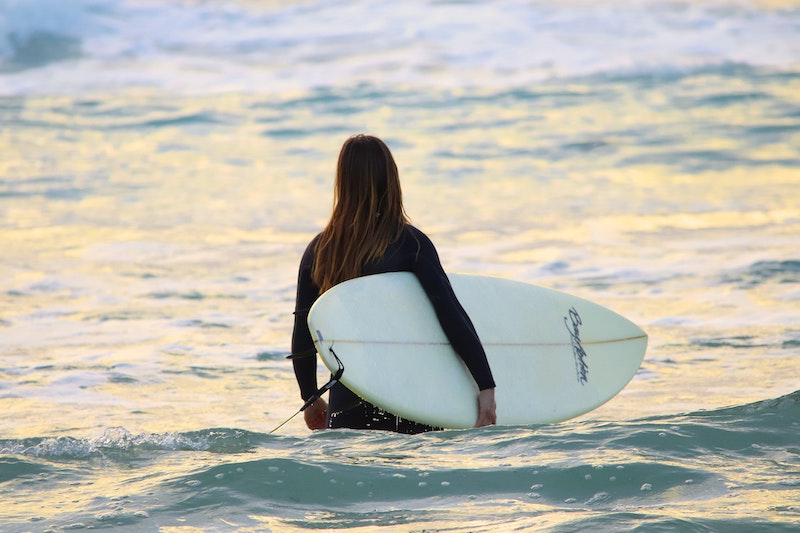The water in the UK isn’t renown for being warm, even in the midst of summer. Fortunately, wetsuits make UK watersports much more bearable and allow activities, such as surfing, to be accessible in colder waters.
This article will explore how a wetsuit works and what you should take into consideration if you are thinking of buying one. There are an array of factors which affect the type of suit you should buy, including the thickness, the flexibility of the suit and the sport itself.
How does a wetsuit keep you warm?
Wetsuits essentially work by warming the water between the suit and your body. When you are submerged in water, a thin layer of water exists between your skin and the neoprene of the suit. This water is then heated up from the warmth of your body. Consequently, you are able to remain in the water for longer because heat is trapped close to your body and not lost.
The advancement of neoprene
If you have previously tried wetsuits years ago and thought “that wasn’t for me”, you will be pleased to know that neoprene has significantly developed in recent years.
Now suits are warmer, lighter and more flexible through the advancement of neoprene technology. For example, some neoprene is created with ridges, which drain off extra water, which not only lightens the suit but also enhances the warmth.
It’s not just the neoprene that has improved. Many suits are now sealed more proficiently. Some are sealed with glue as well as blind-stitched to ensure no unnecessary water leaks inside.
Make sure the suit fits properly
The last thing you want from your wetsuit is for it to be too big. When a wetsuit is baggy, it leaves too much room for water to flush through. Therefore, the suit cannot work correctly.
You want the suit to fit you like a second skin but it should not be so tight that it restricts movement, especially in the shoulder area.
Putting on a wet suit should be quite hard work but it should not be such a struggle that you can’t get the neoprene over your shoulders and hips.
Wetsuit thickness
Wetsuits come in a series of thicknesses. Wetsuit thickness is measured in a ratio form that refers to millilitres, for example, 5:3.
The numbers 5:3 indicate that the suit is five millilitres thick on the leg and body and three millilitres thick on the arms.
Each thickness is recommended for a season which is explained below.
Winter wetsuit thicknesses:
- 6:4
- 5:4
- 5:3
Mid-Season wetsuit thicknesses:
- 4:3
Summer wetsuit thicknesses:
- 3:2 and anything below.
There are also shorty wetsuits (these are wetsuits that stop at the knee and elbows).
Also, it is worth noting that some 4:3 suits may be labelled as summer suits on online websites.

Consider the time of year
Therefore, when choosing a suit, it is essential to take into account what time of the year you are planning to use it and choose the thickness accordingly.
Also, everyone feels the heat/cold differently. Some people may feel the cold either less or more than others. Some people are happy wearing a 4:3 suit throughout the year, despite the season.
It is best to follow the advice of the recommended seasonal thicknesses if you are unsure of what you need.
Below are some examples of watersports that a wetsuit may be useful for and the type of suit you should consider.

Different wetsuits for sports
Surfing
As previously mentioned, choosing a suitable wetsuit for surfing will depend on the time of year you plan to surf.
If you are surfing only in the summer, for example, you may want to consider a thinner summer suit, as thick winter suits can feel too stifling during the summer months.
Alternatively, if you can only afford one suit, and you are definitely going to go in the water in the depths of winter such as January and February, a winter suit will be essential, as a thinner one will not be sufficient.
For an all-rounder, most surfers opt for a 4:3 suit, which will carry them through from April to October.

Swimming and triathlon
For open water swimming, you ideally want to avoid a thick suit. You also want a suit with a lot of flexibility around the shoulders.
A 4:3 thickness is the thickest you should go. However, ideally, you need something 3:2 or below.
Swim specific wetsuits
There are wetsuits especially designed for the purpose of swimming and if you are considering competing in triathlons, this is what you should be looking for. They are specifically engineered to be as light as possible for you to excel in your swim career.
Kayaking
Some people do not wear wetsuits for kayaking. However, if you are getting wet and cold, it may be something you would like to consider. Ideally, you need to choose a suit with flexibility and select something in a summer thickness.
In the British summer months, a short wetsuit may be a great choice as you can also enjoy the heat of the sun. There are also one millimetre suits, which could also be a good option.
Paddleboarding
Similar, to kayaking, not all paddleboarders wear a wetsuit in the summer months. Even with the unreliability of the British weather, a short wetsuit may be sufficient enough to keep you warm as well as enjoying the sun.
If you plan to paddleboard into bigger waves, you may want to consider a full-length summer suit because you are more likely to be submerged entirely in colder water.
Hopefully, this article has helped you if you are considering buying a wetsuit this summer.


